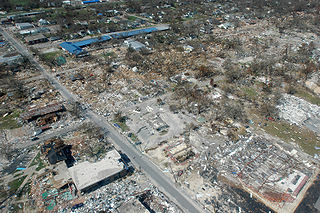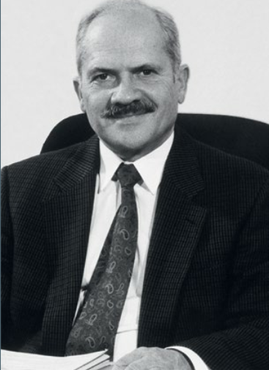
An actuary is a professional with advanced mathematical skills who deals with the measurement and management of risk and uncertainty. The name of the corresponding field is actuarial science which covers rigorous mathematical calculations in areas of life expectancy and life insurance. These risks can affect both sides of the balance sheet and require asset management, liability management, and valuation skills. Actuaries provide assessments of financial security systems, with a focus on their complexity, their mathematics, and their mechanisms.

Actuarial science is the discipline that applies mathematical and statistical methods to assess risk in insurance, pension, finance, investment and other industries and professions. More generally, actuaries apply rigorous mathematics to model matters of uncertainty and life expectancy.

Harald Cramér was a Swedish mathematician, actuary, and statistician, specializing in mathematical statistics and probabilistic number theory. John Kingman described him as "one of the giants of statistical theory".

The Casualty Actuarial Society (CAS) is a professional society of actuaries in North America specializing in property and casualty insurance.
The Institute of Actuaries was one of the two professional bodies which represented actuaries in the United Kingdom. The institute was based in England, while the other body, the Faculty of Actuaries, was based in Scotland. While the Institute and Faculty of Actuaries were separate institutions, they worked very closely together, and their professional qualifications and actuarial standards were identical. On 25 May 2010, voting members of the institute who took part in a ballot voted to merge the institute with the faculty, thus creating the Institute and Faculty of Actuaries, which came into being on 1 August 2010. The Institute of Actuaries ceased to exist on that date.
The Faculty of Actuaries in Scotland was the professional body representing actuaries in Scotland. The Faculty of Actuaries was one of two actuarial bodies in the UK, the other was the Institute of Actuaries, which was a separate body in England, Wales and Northern Ireland. While the Faculty of Actuaries and the Institute of Actuaries were separate institutions, they worked very closely together, and the professional qualifications and professional standards for actuaries were identical in each of them. On 25 May 2010, voting members of the Faculty who took part in a ballot voted to merge the Faculty with the Institute of Actuaries, thus creating the Institute and Faculty of Actuaries which came into being on 1 August 2010, superseding the Faculty of Actuaries which ceased to exist on that date.
Gheorghe Mihoc was a Romanian mathematician and statistician.
Cecil James Nesbitt, Ph.D., F.S.A., M.A.A.A. (1912–2001) was a mathematician who was a Ph.D. student of Richard Brauer and wrote many influential papers in the early history of modular representation theory.
In actuarial science and applied probability, ruin theory uses mathematical models to describe an insurer's vulnerability to insolvency/ruin. In such models key quantities of interest are the probability of ruin, distribution of surplus immediately prior to ruin and deficit at time of ruin.

Michael Rapoport is an Austrian mathematician.

The Institute and Faculty of Actuaries is the professional body which represents and regulates actuaries in the United Kingdom.
The actuarial credentialing and exam process usually requires passing a rigorous series of professional examinations, most often taking several years in total, before one can become recognized as a credentialed actuary. In some countries, such as Denmark, most study takes place in a university setting. In others, such as the U.S., most study takes place during employment through a series of examinations. In the UK, and countries based on its process, there is a hybrid university-exam structure.

Georg Bohlmann was a German mathematician who specialized in probability theory and actuarial mathematics.

The Gothaer Group is a German insurance company with circa 4.1 million members. Its core businesses are all insurance services. Gothaer Allgemeine Versicherungs AG customers include private clients and small- and medium-sized businesses. They offer their products to private and corporate customers. The customers are carefully secured in instances like: personal or group accidents, motor accidents, property damages, river shipping, robbery and burglary, fire, storm and water damages; Their product offer covers fields of property, health and life insurance. Gothaer insures industrial, business and private customers - with asset management and investment - forming another area of business. The head office is located in Cologne, Germany.
Friedrich Böhm was a German actuarial and insurance mathematician and university lecturer. During World War II, Böhm was conscripted into Group IV of Inspectorate 7, an early cipher bureau and Signals intelligence agency of the German Army (Wehrmacht), working to decode foreign Ciphers. He would later work in the successor organization: General der Nachrichtenaufklärung, in a similar role.

Otto Leiberich was a German cryptologist and mathematician. Leiberich is most notable for establishing the Bundesamt für Sicherheit in der Informationstechnik in 1991.
Virginia Ruth Young is the Cecil J. and Ethel M. Nesbitt Professor of Actuarial Mathematics at the University of Michigan, and an expert on the mathematics of insurance.
Paul Louis Riebesell was a German mathematician, statistician, actuary, and president of Hamburger Feuerkasse. At the International Congress of Mathematicians, he was an invited speaker in 1932 in Zürich and in 1936 in Oslo.
Jozef Lodewijk Maria Teugels, or Jozef L. Teugels, Jef Teugels is a Belgian mathematical statistician and actuary. His main contributions are in extreme value theory, stochastic processes, and reinsurance theory.









